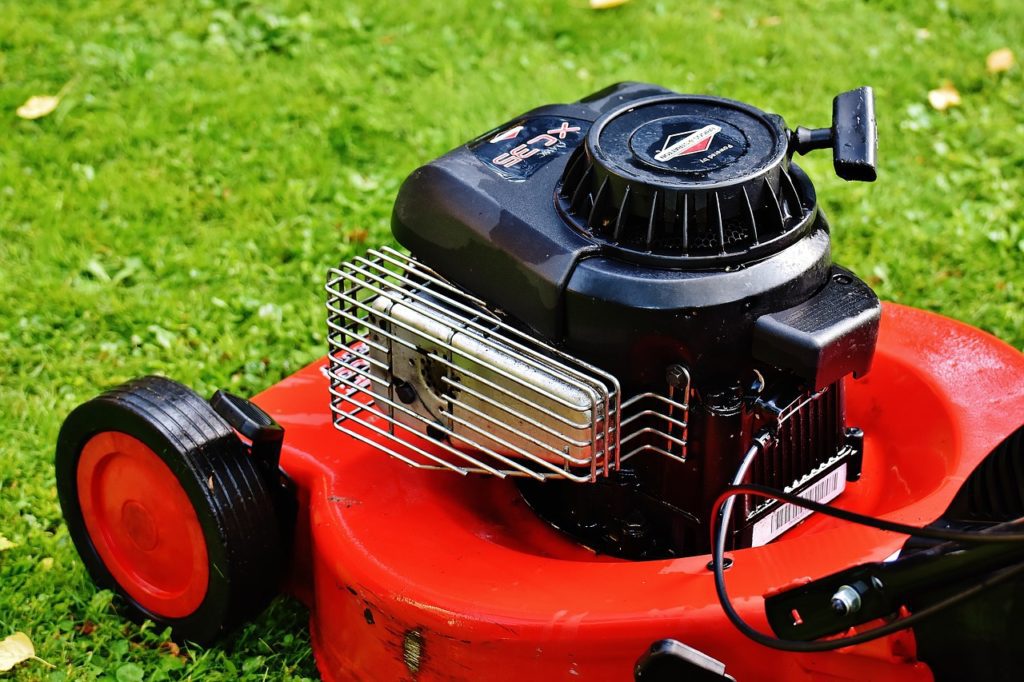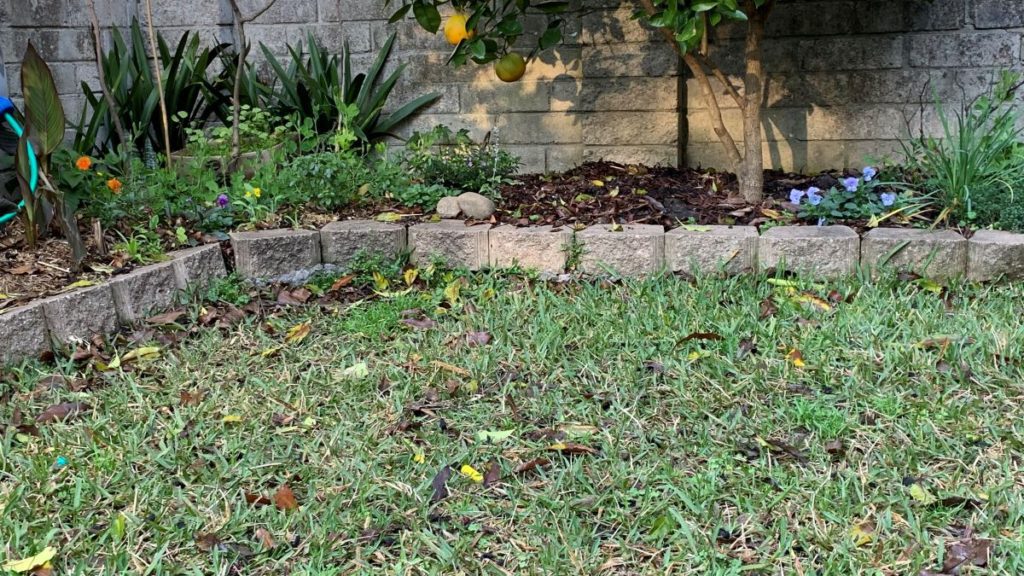Mulched leaves are a fantastic addition to your grass and are the perfect way to maximize your lawn growth. Fall leaves can be mowed and mulched into your lawn to add extra organic matter, feed soil microbes and improve the soil’s water holding capacity. Shredded leaves work best as they break down quickly.
How to mulch leaves for lawn
Top tips when mulching leaves for lawn
- Always use shredded fall leaves. Shred them straight on your lawn or use a shredding attachment on a leaf blower.
- Apply a thin layer of leaf mulch, make sure the leaf blades are sticking through and still get sunlight.
- Use a rake to move the leaves across the lawn and move them between the blades.

Mulching leaves into lawn – The evidence
Universities have looked into the benefits of mulching leaves into lawn and have shown that in almost all instances, chopping up fall leaves regularly into lawn is a great way to manage the leaves without harming the grass1.
A study by Perdue University showed that mulching leaves into lawn had no negative affects on lawn quality including color, growth, thatch accumulation, soil pH, weeds or disease pressure2.
While fall leaves will not replace your regular lawn fertilizing schedule but it does have many soil benefits and saves waste.

Collecting leaves for lawn mulch
Collect fall leaves from trees away from your lawn and shred these using a leaf blower with a shredding attachment or scatter a small amount on your lawn and mow over the top. Apply a thin layer of fall leaves on top of your lawn making sure the leaf blades are still coming through.
Use a metal rake to move the shredded leaves across your lawn and working it through your lawn. This will make sure the leaf blades can still get sunlight and photosynthesize.
Mulching leaves on top of the lawn
Leaves can be mulched straight on top of your grass. If you have an overhanging tree that drops leaves onto your grass, simply grab your mower and shred the leaves until they are in small pieces. The smaller the pieces the quicker they will break down so run over them 2-3 times.
For small a small amount of leaves, the grass clippings and leaves can be left on top of the grass to break down.

Mulching leaves into long grass
For very long grass, rake the leaves up first off your lawn. Mow the lawn and then scatter shredded leaves over the top. Leaving a large amount of lawn clippings and leaves can stop your lawn from getting enough light.
Make sure you use a light layer of fall leaves, rake it in so that the lawn can still reach the sun and shred the leaves to around 5mm width.
Using composted fall leaves on lawn
Composed fall leaves or leaf mold is a fantastic top dressing for lawn. If you have lots of fall leaves, bag them up in compost bags or add them to a 4×4 foot wire cage. These will break down over 6 months and will be ready to add to the top of your lawn.
After 6 months leaves will break down and look like a light soil. This is rich in nitrogen and organic matter making it a perfect top dressing.
This mix can be sprinkled on top of lawn and raked over. Water the leaf mold into the lawn for a fantastic fertilizer and soil conditioner.

Why you should mulch leaves instead of leaving them on grass
Whole fall leaves that are left on lawn can cause problems by blocking the light, forming a thick cover, growing mold and eventually damaging your lawn. A thick layer of fall leaves can trap too much water on lawn leaves and cause fungus diseases.
Shredded fall leaves that are applied thinly to the top of lawn are great for your soil, lawn and the environment.
Benefits of mulched leaves for grass
The benefits of mulched leaves for grass include adding nitrogen, organic matter and improving the water holding capacity of your soil. Mulching leaves into grass also saves waste, saves time and makes it easier to fertilize your lawn while clearing up your leaves.
Benefits of mulching leaves into grass
| Lawn Benefits | Benefits for you | Environmental Benefits |
| Improves the soil | Saves time | Less waste |
| Increases soil microbes | Saves money | Less methane |
| Increase soil water holding | No heavy lifting | Increases insect and soil life |
| Attracts worms | Cleans up your lawn | Reduces water needs of grass |
Top benefits of mulched leaves for grass
Improves the soil
Mulched leaves are a natural organic substance that will break down over time and feed soil microbes and worms. Worms will dig their way through your lawn to eat the microbes that are breaking down the leaves. The small holes left by the worms add extra air to your grass and will encourage strong root systems.
Increase soil microbes
Soil microbes will break down the Fall leaves releasing the nutrients trapped in the leaves. Nitrogen is one of the best nutrients you can add to grass as it is needed for green leaf growth. Adding fall leaves gives food for your microbes which will release this nutrient to your grass.
Increase the water holding capacity of soil
Fall leaves will also increase the water holding capacity of your soil as the organic matter is mixed in. Organic matter including fall leaves helps the soil to trap water while also allowing it to naturally drain. Fall leaves have the double benefit of helping your lawn get the water it needs without staying too wet.
Benefits of mulching leaves into grass for you
Saves time
Shredding leaves into your lawn using your mower is the easiest way to clean up your yard. You can save yourself the step of raking up and moving the leaves by simply shredding them where they fall. Do this regularly throughout the season and collect any excess fall leaves in your mower’s catcher to add to your compost.
Saves money
Forget buying plastic bags and filling them with fall leaves to leave out on your curb and shred them into your lawn instead. Save money by skipping this step and keep your organic matter for the benefit of your lawn.
Benefits of mulching leaves into grass for the environment
Keeping organic matter at your home and improving the soil is also a great way to help the environment. Yard waste that ends up in landfill will break down releasing methane into the air and use up valuable land space.
Benefit from the organic matter that comes from fall leaves and mulch them into your own lawn.
References
Goatley, M. “Leave” Them Alone: Lawn Leaf Management, Virginia State University, 2020, accessed 4th July 2021, https://vtechworks.lib.vt.edu/bitstream/handle/10919/99686/SPES-212.pdf?sequence=1&isAllowed=y
Acosta-Martínez, V., Reicher, Z., Bischoff, M. et al. The role of tree leaf mulch and nitrogen fertilizer on turfgrass soil quality. Biol Fertil Soils 29, 55–61 (1999). https://doi.org/10.1007/s003740050524
I am an accredited practicing dietitian, experienced gardener and a dedicated cook. I love writing and sharing my experience so you can learn from my successes and mistakes.

Comments are closed.